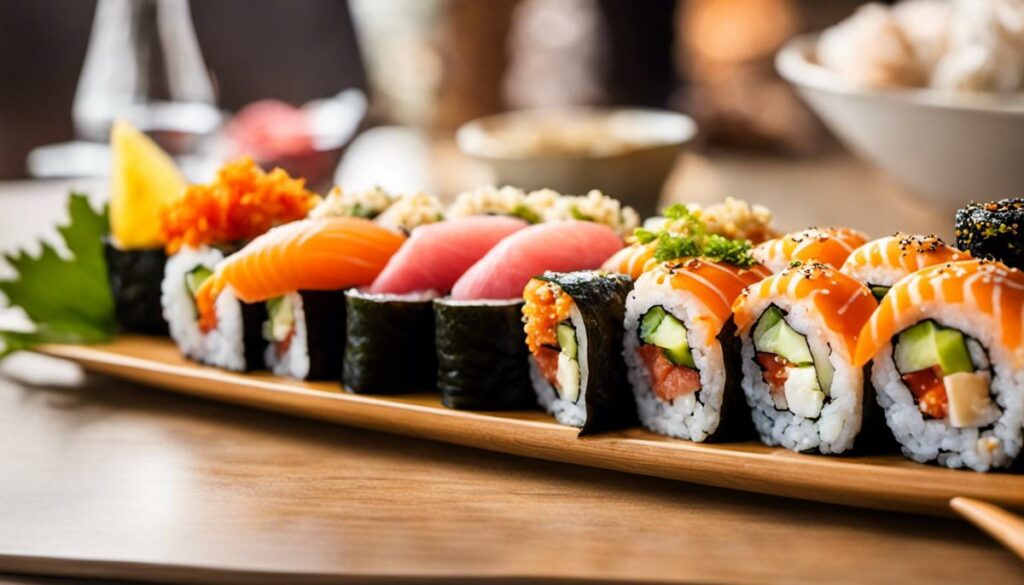This letter is dedicated to all the fascinating aspects of sushi, the globally popular Japanese dish. Sushi has grown from humble origins to become a worldwide culinary phenomenon. It is the artful symbiosis of rice, raw fish and nori that gives sushi its special status. But sushi goes far beyond its basic ingredients; it embodies a deep culture, deep-rooted crafts and a number of traditions. In this writing, we will explore in depth the history, food culture and etiquette, different types and their characteristics, the presence of sushi in today’s lifestyle, and health implications and misconceptions surrounding sushi.
Basics of Sushi and Origin
Speaking of the seductive world of lifestyle influencing, it would be incomplete without discussing the creative and exquisite art of sushi making. Now that the world is a global community and all cultures are merging, it has become increasingly important to familiarize ourselves with the fine details of our daily pleasures. One such treat is sushi, an iconic symbol of Japanese cuisine and art that has found its way into our fine dining plates.
But where does sushi originally come from? The history of sushi is an invigorating journey that we must immerse ourselves in to fully appreciate its richness. Sushi, although readily accepted as a Japanese dish, has its roots in Southeast Asia. Originally, it was developed as a concertation method for fish. Rice was wrapped around a fish to aid in the fermentation process. Over time, it became a meal in itself, with the rice and fermented fish consumed together. This technique spread to Japan, where it evolved and refined, eventually becoming what we know today as sushi.
The essential basic elements of sushi are rice, fish and seaweed. Sushi rice is carefully seasoned with a vinegar solution to preserve its unique texture and flavor. The fish, which is of the highest quality, can be raw, lightly seared or cooked, bringing the elements of ocean and land to every bit. The seaweed, also known as nori, envelops the sushi and gives it its characteristic shell.
It’s the artistry and precision that goes into sushi preparation that really sets it apart and makes it a landmark of Japanese culinary heritage. Sushi reflects the philosophy of Japanese aesthetics, an aesthetic that values the subtle balance and harmony of taste, texture and appearance, clearly an echo of our own values, and a reminder of the importance of aesthetics throughout all aspects of life.
As always, it is important that we cherish and preserve this exquisite art by enjoying it consciously and respectfully. Because as we know, everything stands and falls with the first impression. And with every bite of sushi, we take in a piece of history, culture and handicrafts. So it’s more than just a meal, it’s an experience, one that lives up to the high standards we set for ourselves, both in terms of aesthetics, quality and authentic experience.
So experience sushi, experience the world, enrich your life – because the symbiosis of art and lifestyle can hardly be more beautiful. Sushi is not just a dish, but an ode to beauty, simplicity and perfection – characteristics that are also ingrained in our personal and collective lifestyles.
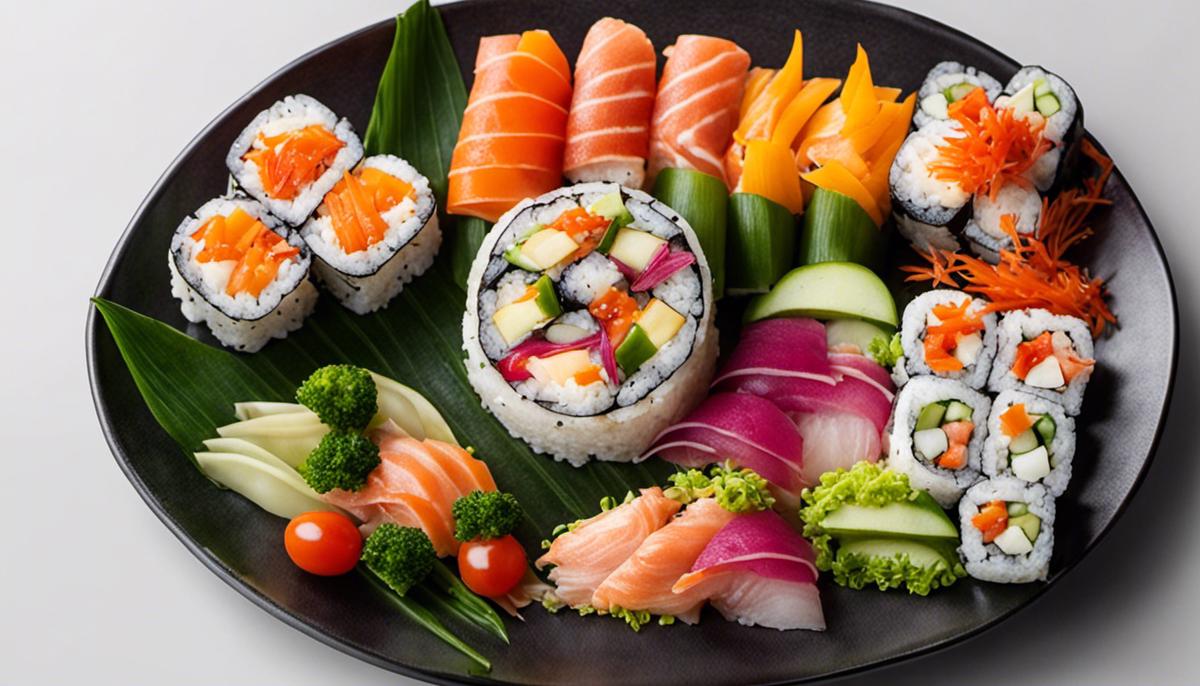
Sushi etiquette and traditions
Respectful use of sushi: Our guide to the important sushi labels
In a noisy, fast-paced world, networked by technology and digitalization, the filigree art of sushi-making has an incomparable appeal for many. It appeals to our longing for careful, loving devotion and craftsmanship. And just as with the aesthetic presentation and enjoyable consumption of sushi, respect and appreciation for this unique culinary treasure are of utmost importance when it comes to the etiquette surrounding the sushi ceremony.
An essential aspect here is the correct use of chopsticks (hashi). This includes not only the correct handling, but also their correct use in the food itself. For example, piercing the sushi is a gross faux pas. Instead of such a barbaric act, one should practice the sushi-friendly art of picking up and turning.
The right soy sauce protocol should be established in the same way. Experienced sushi connoisseurs know that it was once strictly forbidden to dip the rice side of sushi in soy sauce. Rather, it is important to carefully dip the fish side into the sauce. This avoids soaking the rice and ensures that the fish retains its flavor.
An equally important piece of sushi etiquette is expressing appreciation to the sushi master. It’s a recognized gesture to consume your sushi as soon as it’s made – a tribute to the freshness and flavor that goes into making it.
Avoiding strong-smelling perfumes or deodorants before going to a sushi restaurant is another, albeit little-known, aspect of sushi etiquette. One should not detract from the sensory experience by masking the fine, natural smell of the sushi.
These and many other rules are not there to intimidate beginners, but rather to ensure a respectful approach to the millennia-old tradition and culinary intricacies of sushi eating. After all, sushi is far more than just food – it’s a way of life, an art form, and an entire cultural heritage. In addition, by dealing with sushi etiquette, we become not only better sushi consumers, but also true ambassadors of this wonderful and diverse culture of life. Our cuisine thus becomes a space for encounters between different cultures and views and broadens our horizons in a delicious way.
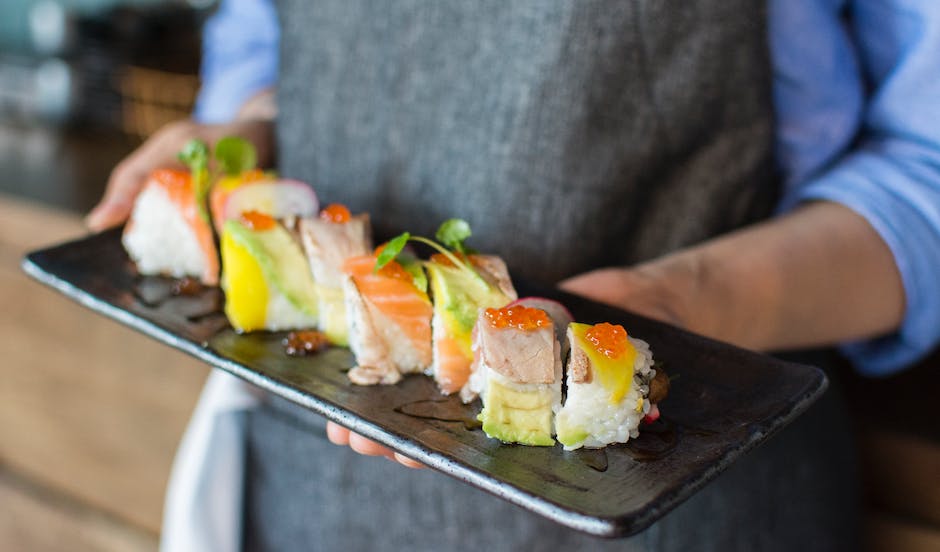
Different types of sushi and their characteristics
When searching for the different types of sushi, one comes across a variety of options that will speed up the pulse of any sushi lover. Each type of sushi stands out for its unique textures, flavors, and presentations.
The first variant we come across is the nigiri sushi. This type is perhaps the most well-known among sushi enthusiasts. In this type of preparation, a handful of perfectly tempered and seasoned Shari rice is formed in the hand and topped with a juicy piece of fresh fish. The aesthetics and simplicity of this type of sushi makes the quality of the ingredients shine.
Maki sushi is another well-known form. Here, a sheet of dried seaweed (nori) is laid out with a thin layer of Shari rice and fillings such as raw or cooked fish, vegetables or egg. The master rolls up the ingredients with the help of a bamboo mat (makisu) and cuts the resulting roll into decorative pieces.
For the more adventurous among us, Uramaki sushi is a delicacy. This inverted form of maki sushi is also known as “inside-out” because the rice is placed on the outside and nori on the inside. It is known for its creative presentation and its combination of flavors and textures.
However, it does not stop at the traditional forms. Sashimi is a lesser-known but equally appreciated form of sushi and consists only of unusually fresh, masterfully sliced fish. Served without rice, sushi lovers will have the opportunity to experience the full-bodied flavor and wonderful texture of the fish.
Then there’s the temaki sushi, a hand-rolled cone shape filled with rice, fish, and vegetables. The raw ingredients complement each other wonderfully and create a natural, fresh taste.
It is important to know different types of sushi in order to fully exploit the world of sushi. With an in-depth knowledge, a true encounter with the subtle nuances of taste and aesthetics of the art of sushi can take place. This authentic taste experience showcases the culinary art and elegance of Japan, offering connoisseurs a taste of culture, tradition and attention to detail.
Finally, it’s important to remember that don’t forget to include a glass of sake before enjoying sushi. This is the only way to round off the sushi experience perfectly. Let’s understand sushi not only as part of the food chain, but as a true pleasure for the senses. His art, beauty and interpretations have become an indispensable part of our lifestyle culture.
Ultimately, it’s up to us to explore the range of sushi variations and experiences. Each piece of sushi has its own world of flavors, reflections and cultural exchange waiting for the curious among us. Enjoy your sushi journey!
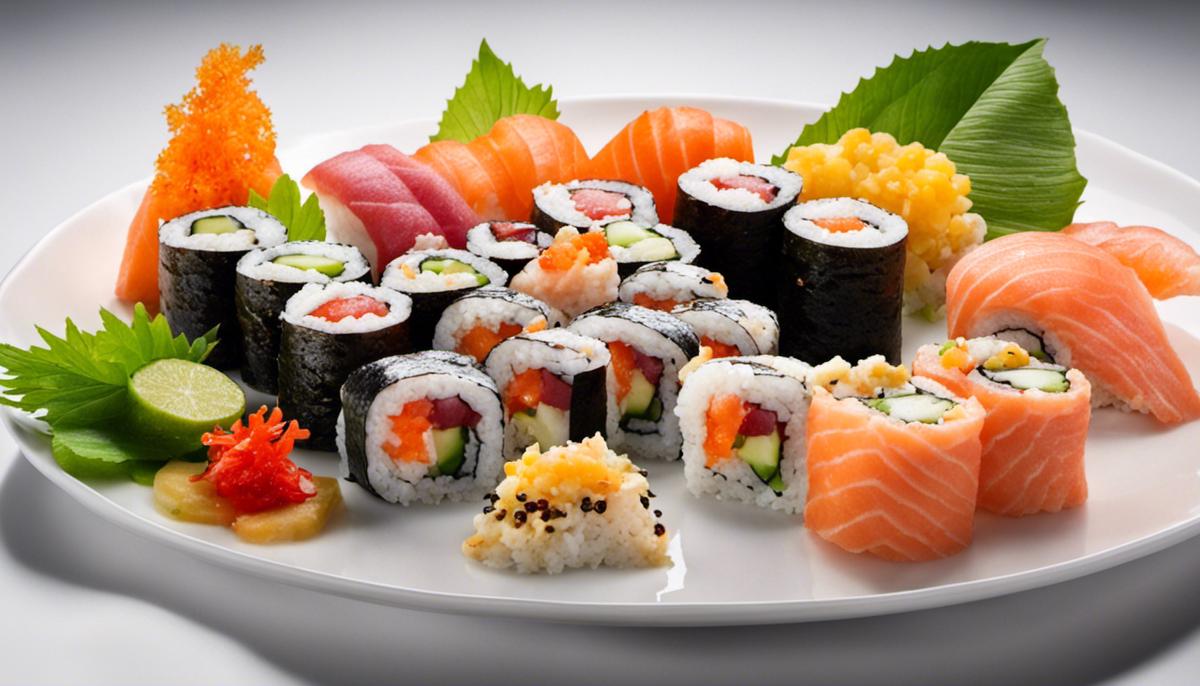
Sushi culture in today’s lifestyle
In our increasingly globalized world, sushi builds bridges between cultures and broadens our culinary horizons. From minimalist nigiri to artfully rolled maki, sushi offers a variety of interesting variations. Uramaki – or the inside-out rolls – are particularly popular in Western countries, while purist sashimi is highly regarded in Japan. Temaki sushi – as hand rolls are called – wrapped in a cone-shaped seaweed leaf completes the picture. The breadth of these variations is a reflection of the creativity and sensitivity that goes into this remarkable art form.
Sushi often looks like a still life, rich in colors, shapes, and texture. Its aesthetic is downright picturesque. It’s really in the eye of the beholder whether sushi is art or culinary, or both.
Well, enjoying sushi is an experience for all the senses. Here, taste, smell, feel and the visual experience coexist in perfect harmony. It invites us to taste each piece with mindfulness and let ourselves be surprised by its variety of flavors.
Sake and sushi form a harmonious pairing and offer us an authentic Japanese food culture. Sake emphasizes the complex nuances and subtle flavor profiles of sushi, creating a symphony of flavors. It’s worth knowing to know the right sake for your preferred sushi type in order to experience an indulgent ensemble.
So we can say that sushi has anchored itself not only in our palates, but also in our hearts as an insight into Japanese cuisine and culture. It combines the conscious perception of food, the recognition of another culture and our affinity for aesthetics and detail. It’s more than just a meal, it’s a cultural event that tells a story and connects people.
Spread everywhere, embraced by foodies and highly regarded by lifestyle culture, sushi is an expression of passion, craftsmanship and aesthetics that appeals to every one of our senses. A foray into the diverse world of sushi confirms: sushi is not just a gourmet delight – it is a way of life that combines beauty, arts and traditions. And that’s exactly why sushi is a mainstay in today’s lifestyle culture.
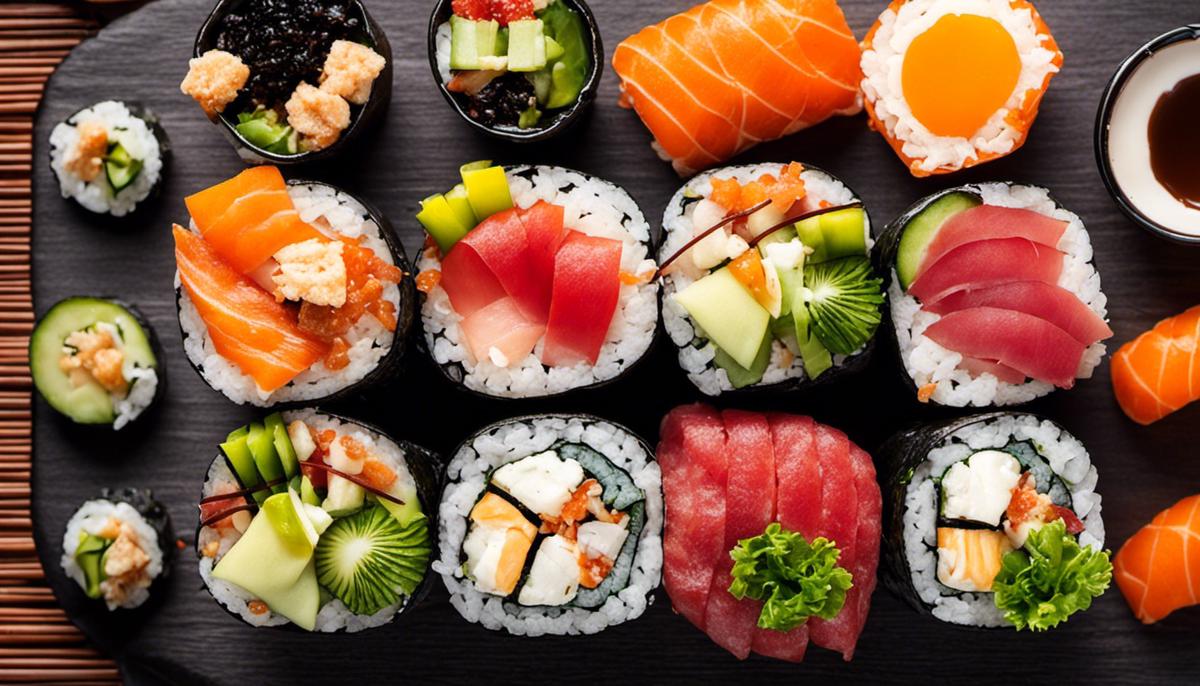
Health Benefits and Risks of Eating Sushi

Exploring the immeasurable depths of sushi is an enlightening journey through culture, art, tradition, and taste. It’s more than just a culinary dish. Sushi is an embodiment of craftsmanship, strict traditions, etiquette and carefully sharpened palates. At the same time, sushi has had the ability to evolve for centuries and adapt to modern trends without denying its roots. Sushi is a culinary window into Japanese culture and offers much more than its delicate and healthy ingredients suggest. Whether it’s a part of everyday life or an extraordinary delicacy, sushi has grown into a globally recognized phenomenon that shows no signs of slowing down.
